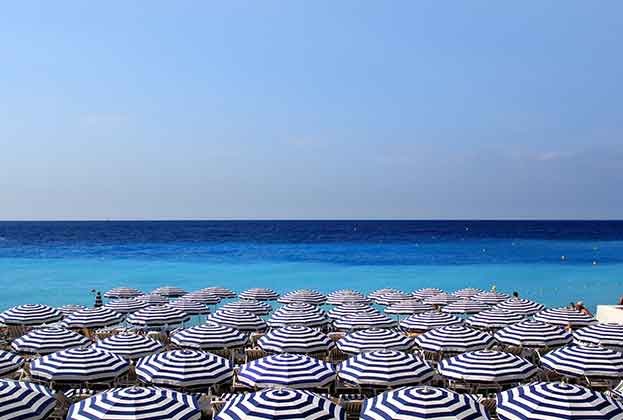The Georgian era began in 1714 and lasted more than 100 years, spanning the reigns of five monarchs – though only four of them were called George. The death of William IV in 1837 brought the period to a close and made way for the Victorians.
It was a time of relative prosperity, great change, new ideas and creativity in Britain that set the stage for a domestic building boom.
A variety of styles characterised the architectural scene in the 18th and early 19th centuries. But whether it’s a grand country house, a glorious old rectory or a sweeping city crescent, if you are picturing something ‘typically’ Georgian, you’re probably thinking along elegant, symmetrical, neoclassical lines.
The neoclassical style – a new take on the old
For wealthy young Georgians fresh from their educational Grand Tour of Europe, it was all about the art, culture and architecture of ancient Greece and Rome.
From the mid-18th century onwards fashionable buildings reflected the simplicity and balance of this neoclassical design, featuring an abundant use of columns and pediments.
The appeal of Georgian architecture to today’s homeowners
For many, a Georgian house is the dream home. The wow factor created by classic proportions, symmetry, light-filled rooms and delicate finishes continues to attract generation after generation of buyers whether for smart townhouses or country houses in beautifully landscaped grounds.
Key features of a Georgian house
- Symmetry and proportion. Symmetry is synonymous with Georgian property, and the relationship between the dimensions of ceilings, windows, doors and walls – so pleasing to the eye – is key to the spacious look and feel.
- Entrances. When it comes to kerb appeal, Georgian houses certainly have a lot to offer. Impressive front doors were usually panelled, generally painted in a dark colour, and often flanked by pillars with an elaborate semi-circular window or fanlight above. The entrances of grander Georgian buildings typically featured a portico with a roof supported by columns. What lay beyond was often equally stunning, with magnificent entrance halls and beautiful geometrical staircases.
- Windows. The Georgian era saw the rise of the sash window which was a revelation, allowing in more light than the earlier casement style. Initially only the bottom sash could be opened but by the 1750s, double-hung sash windows were common. Not only do these windows let in the light, they are effective for temperature control, drawing in cool air through the open lower section and hot air out of the open top.
- Ceilings. The Georgians are known for their high ceilings which create a wonderful sense of space, made all the more spectacular where floor-to-ceiling windows flood the rooms with light. Decorative ceiling roses and cornices are typical of the period – the more important the room, the more elaborate the mouldings.
- Setting. For grand country houses set in landscapes by Lancelot ‘Capability’ Brown or Humphry Repton, it was a question of carefully designed pastoral beauty. A ha-ha was often built close to the house to give the illusion that the park extended from the garden straight out over the fields beyond.
In countryside and city street, Georgian architects and designers have given us a host of uplifting buildings with deep and lasting appeal.
With thanks to the Georgian Group. Read more about the group’s work promoting and protecting our Georgian heritage.
Further information
Contact Crispin Holborow
.jpg)
.jpg)
.png)




.jpg)

.jpg)
